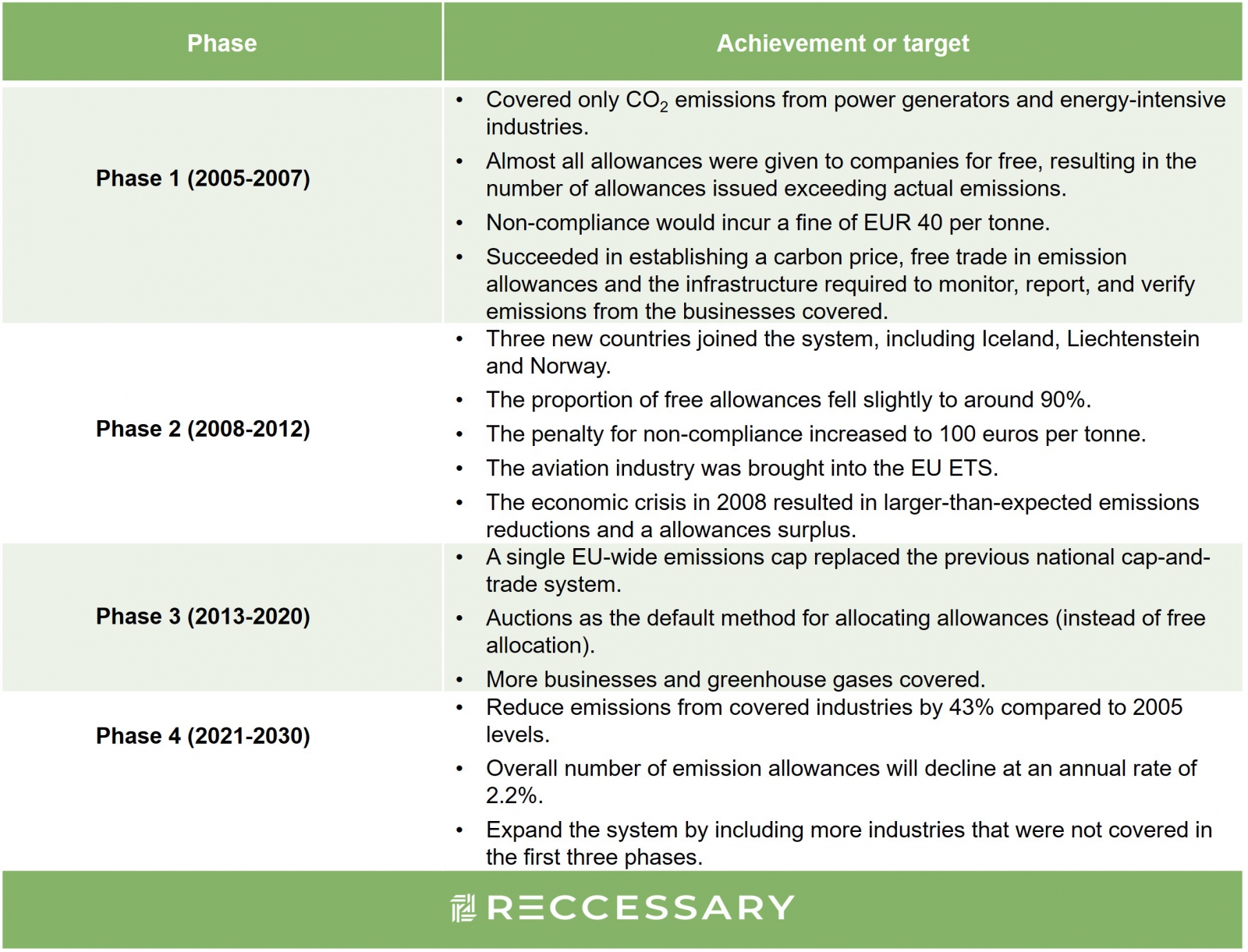Operation mechanism
The EU ETS implements a cap-and-trade program to limit greenhouse gas emissions below the cap through purchasing allowances. Enterprises can sell, retain or purchase allowances based on their need to ensure the total emissions do not exceed a specified emissions target. In addition, each company must surrender allowances of emissions within the cap by the end of the year, otherwise a 100 euro fine per unit will be incurred. The verification is conducted by enterprises through entrusted agencies, and the government will sample and monitor the data provided.
Schedule
The EU ETS has entered the fourth phase. The objectives of the phases are as follows:

Participants
Participants includes 27 EU member states, as well as Iceland, Norway and Liechtenstein, totalling 30 countries and cover more than 12,000 enterprises, factories and power plants that consume more than 20 MW of energy. Industries with high carbon emissions include steel, cement, glass, ceramics, electricity, civil aviation and public utilities, which account for about 40% of greenhouse gas emissions in the EU.
Trading method and marketplace
European Union Allowance (EUA) is the tradable unit under the EU ETS, which gives the holder the right to emit 1 tonne of carbon dioxide. EUAs are recorded in the electronic form within the Union Registry. Marketplaces that can trade EUAs include the European Climate Exchange (ECX) and the European Energy Exchange (EEX).
Carbon price
As of November 29, 2021, the price of EUA was EUR 74.21 per tonne, an increase of 120.27% from EUR 33.69 in January 2021.
Future development
In addition to expanding the scope of sectors covered, free allowances are expected to be reset after 2034. By then, allowances must be obtained exclusively through the ETS auction. To address the risk of carbon leakage, the EU introduced a Carbon Border Adjustment Mechanism (CBAM) in July 2021, and more policies may be rolled out in the future to require countries and enterprises to join the emissions reduction action. In addition, the collected carbon fee will be used to establish an emissions reduction fund to encourage enterprises to contribute to environmental sustainability.